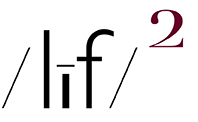it’s true to life ~ (embiggenable)
it’s true to life ~ (embiggenable)
it’s true to life ~ (embiggenable)
ON A RECENT TOP ENTRY THE IDEA OF A PHOTOGRAPH being true / truthful was raised. A subject which always brings out those who like to dance on the head of pin. Consequently, I very rarely pay much attention to such commentary on the subject. That said, I’ll throw caution to the winds and wade into the subject.
First things first; I believe the words true / truthful are misnomers, re: a photograph. That’s cuz a photograph, a thing in and of itself, is, quite obviously (or should be) not the thing that it depicts. Rather, it is depiction of something. And, to my way of seeing / thinking, in the so-called straight photography world I look for depictions that are reasonably accurate representations, inasmuch as the medium and its apparatus is capable, of the thing depicted. And I leave it at that cuz I know…
“…. most serious photographers understand that there's this large gap between the world and how the world looks through a photograph. ~ Stephen Shore
Despite the “large gap between the world and how the world looks through a photograph”, straight photographs, made by both serious photographers and amateur snapshooters, all illustrate recognizable subject matter. Simply put, the depicted referent is recognizable cuz the depiction thereof-the visual essence-is reasonably accurate.
Does that make a given photograph truthful? Well, according to the dictionary-(of artistic or literary representation) characterized by accuracy or realism; true to life-the answer is “Yes, it is truthful.” However, I would write that the visual essence of a straight photograph can be accurate, realistic, or, if you prefer, true to life.
Which leads to this conclusion:
There's something essentially fictive about a photograph. That doesn't mean that if you understand that, and you understand how the world is transformed by the camera, that you can't use the limitations or the transformation to have an observation that is a very subtle perception of the world.” ~ Stephen Shore
All of the above written, there is a catch / fly in the truthy ointment of any given photograph; a photograph is capable of having two different attributes - the literally depicted referent, and, the content, aka: the picture maker’s concept-driven intent (often labeled as the meaning to be had in a photograph). These are two very different things.
Although, to the eye and sensibilities of the picture maker these two attributes-the visual essence and concept (which the picture maker believes to be true)-are inexorably / intrinsically linked. However, to the eye and sensibilities of a viewer of any given photograph, as Susan Sontag has noted….
“Photographs, which cannot themselves explain anything, are inexhaustible invitations to deduction, speculation, and fantasy.”
….a picture maker’s conceptual truth is, at best, illusive. And, even if discerned, it could be-re: in the sensibilities, if not the eye, of a viewer-to be un-truthful.
So, getting down to brass tacks, re: can a photograph be truthful? The answer, iMo, is both “Yes.” and “No.” That is, “Yes.”, re: visual essence, and “No.”-or maybe better put as “Anyone’s guess.”-re: the implied concept.
In any event, I am not much concerned about the truth in photography thing cuz, like Garry Winogrand…
“I photograph to find out what something will look like photographed.”
